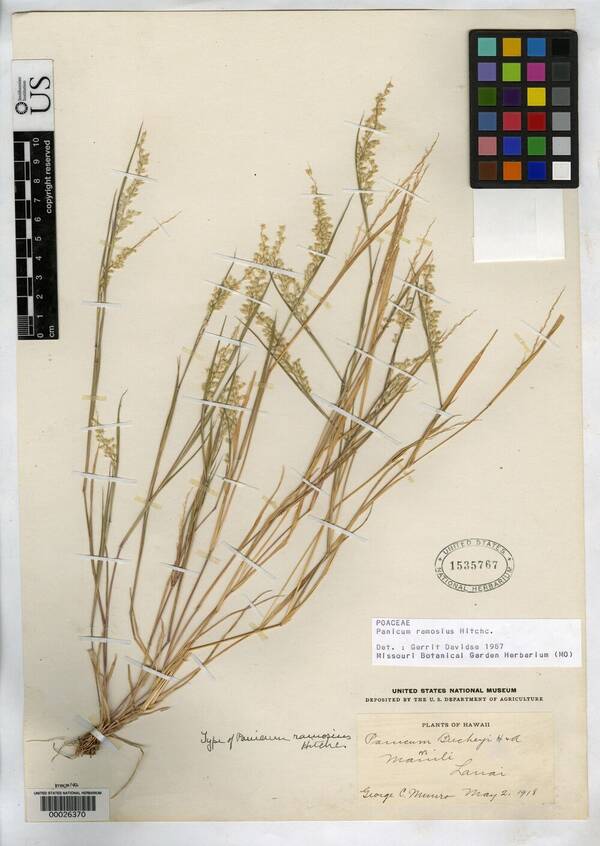Info
Subfamily: Panicoideae
Genus etymology: Panicum = "belonging to bread" [Latin] refering to use by several species as cereal grains
Species etymology: ramosius = "abundance of branches" [Latin] refering to the branched habit
Photosynthetic type: C4 (warm season)
Nativity: endemic
Map

Holotype specimen

Description
Cespitose annuals 10-60 cm tall; culms branched, glabrous or puberulent, the nodes villous. Sheaths glabrous; ligule a row of hairs 1-2 mm long; blades 4-10 cm long, 0.2-0.5 cm wide, glabrous or scaberulous, rarely villous above. Panicles 5-15 cm 1571 long, terminal and axillary, rachis scabrous and villous, branches appressed, scabrous to short-pilose; spikelets 3-4.5 mm long, acuminate, lower 1/2 hidden by the pubescence; glumes as long as spikelet, equal, 3- 5-nerved, lower 2/3 densely villous with hairs 1-2 mm long, apex puberulent to pubescent, internode between glumes distinct, ca. 0.3 mm long; first floret sterile, first lemma 2.5-2.7 mm long, slightly shorter than glumes, 7-nerved, pubescent toward apex, first palea rudimentary, ca. 0.3 mm long, hyaline; second floret 1.8-2 mm long, oblong-elliptic, glossy, smooth, the palea enclosed only at the margins; anthers white, 0.8-1.1 mm long.
(Description source: O’Connor, P.J. 1990. Poaceae, pp. 1481–1604. In: Wagner W.L., Herbst D.R. & Sohmer S.H. (eds.)., Manual of the flowering plant of Hawaiʻi. Vol. 2. University of Hawaii Press & Bishop Museum Press, Honolulu )